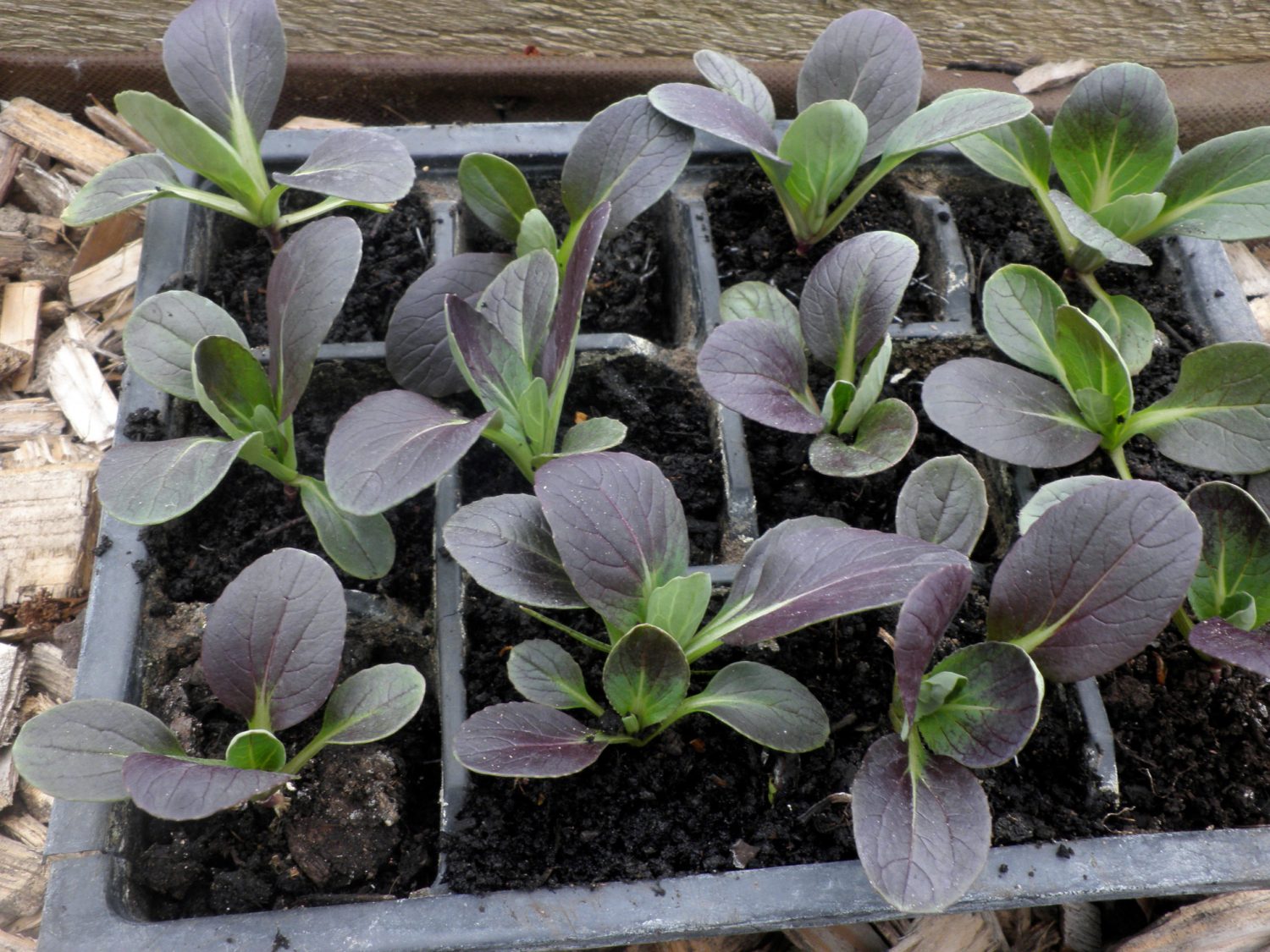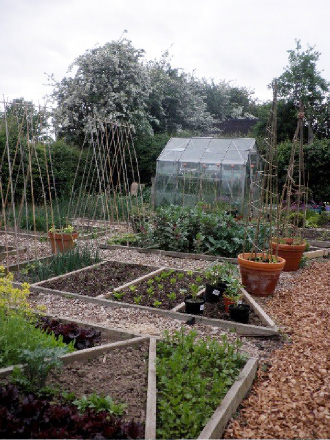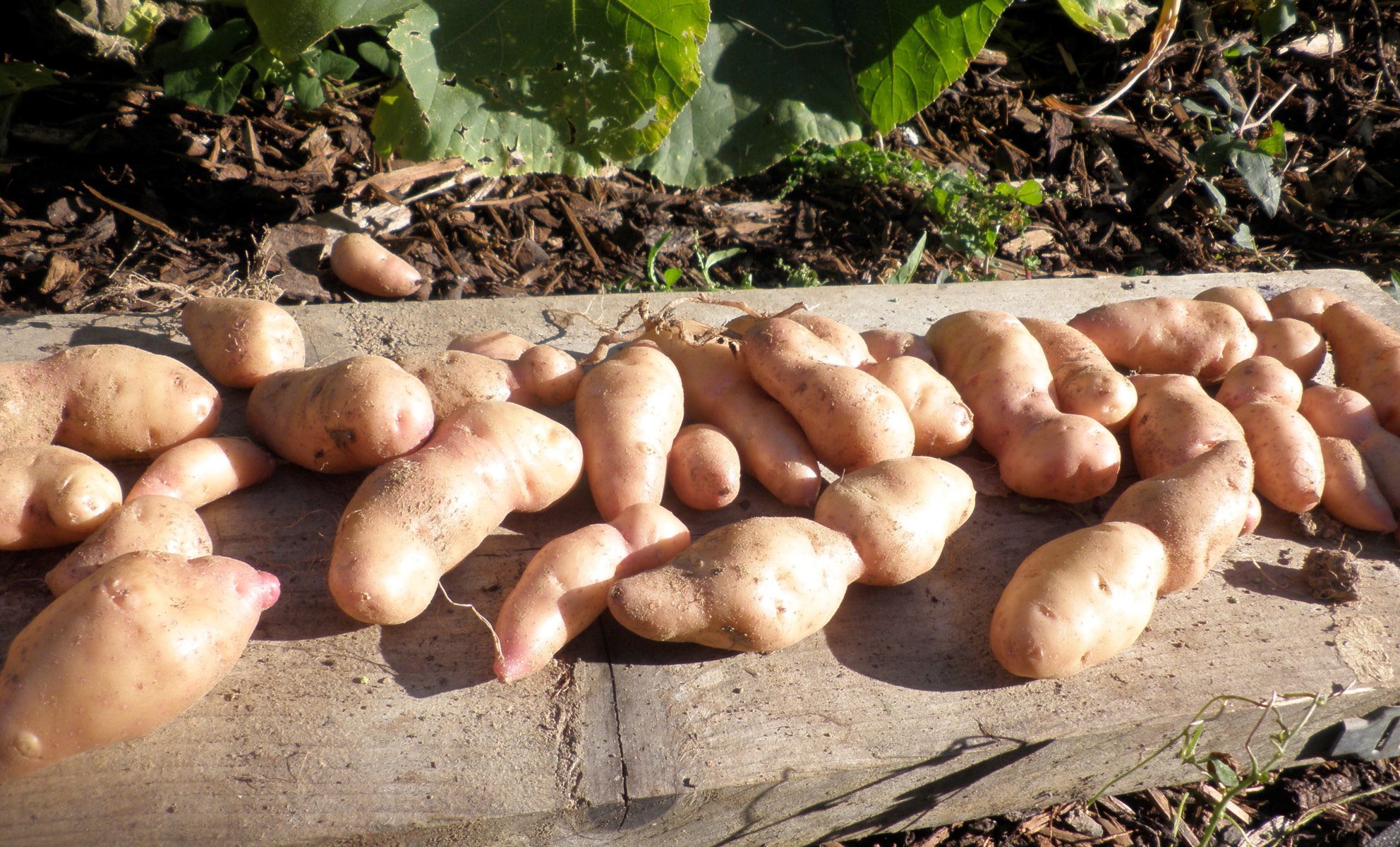The soil is warming and it’s time to sow some vegetables. This year I’m trying to tailor the crops I grow to what – and how much – we actually eat. I’m sure that I’m not alone in suffering from the ‘grow it and throw it’ regime which comes from sowing too many plants, or from growing prolific crops like courgettes that never seem to stop. It’s not always easy to judge how much is enough. For the time-pressed, crops that are quick and easy to grow, harvest and prepare are also a must. Vegetables that are used in favourite recipes, crops that taste much better than shop bought – that are worth the effort – should go onto the list too. Deciding what to grow, and when, can be a bit of a minefield, but with a little thought at the beginning of the season (let’s not make a meal of that bit) we can grow some useful ingredients, save money and eat fresh and healthy vegetables.
Plot for portion size
This won’t work for everyone, or for every crop, but I have found that dividing your plot up into ‘meal sized’ sections can help with planning out how much of some things you will need. The dividing lines don’t need to be permanent and the size of crop will depend on how many are in your household. I’ve found it successful for peas and beans (dwarf and broad), for salad crops, beetroot, spinach, broccoli and herbs like coriander and flat-leaved parsley. Some of these can be sown in succession so that (in theory) the beds can be used several times during the growing season.
Salad days
If you are short of time, but still want to grow something, then salad leaves are wonderfully quick and simple to grow from scratch. Scatter a pinch of seeds straight from the packet (remember portion sizes – it’s easy to sow too much) and within a few weeks – earlier if you like baby leaves – they will be ready to harvest. You can make up your own mix of seeds, or buy ready mixed packets of salad seed. Rocket, mustard and stir-fry mixes of oriental leaves tend to bolt (run to seed) when grown in hot weather, so are best sown in the spring and autumn. Once you get into the habit of sowing a few leafy crops, you will discover how easy it is – and how much cheaper and fresher your salads will be. Most will keep growing as you cut them too – hence the ‘cut and come again’ idea.
Convenience food
Some vegetables are tricky. They can be tricky to grow, a magnet for pests and diseases and all in all can put you off growing your own completely. If you are not able to check on your plot every day, then you’ll need to grow reliable, hardy and pest resistant crops that won’t mind if you miss a few days of tending. Root crops like beetroot and potatoes are good, chard seems to be indestructible and I find leeks and kale to be resistant to the worst of the weather, and not especially attacked by pests (if kale is prone to whitefly and caterpillars, sow later in the summer). These hardy crops will sit out there in the soil, patiently waiting to be harvested all through the winter.
Herbs
Herbs can be grown in the smallest of spaces and will even thrive in containers or on a sunny windowsill. They do need a sunny spot and free draining conditions, as most of them are native to the sun-baked Mediterranean. Depending on what you grow, a little will go a long way, so you should only need one rosemary bush (it may need to be kept pruned) and a few chive, thyme and oregano (or marjoram) plants. Watch out for mint plants; you may find these are best grown in a pot, as they spread about rampantly if left unchecked. If you have a bigger space available, then a designated herb garden in a sunny place, preferably near to the house, will be as pretty as it is productive.
Back door bounty
If your vegetable patch is at the very bottom of the garden, or if you don’t have room for a dedicated space in which to grow vegetables, then some containers by the back door will easily keep you supplied with salads and herbs through the season. The big advantage here is that you can just lean out of the door and pick herbs for cooking and fresh salad ingredients, without having to put on your coat and wellies and go trudging out to your patch.
Slow but sure
The seeds of some root crops – potatoes, parsnips and large carrots take quite a long time from sowing to harvest. Onions and leeks need to be sown early in the season because they take so long to bulk up. Once they’re planted out (grow them in a pot first, because the seedlings are like tiny blades of grass) you can forget about them until the winter. If you want long white shanks on leeks, either dig them up and replant them into a deeper hole, or earth up around the base of the plants.
Harvests and Holidays
It’s worth looking on the back of the seed packets (there are also useful charts online) to find out what the approximate sowing to harvest times are for certain crops; this will give you an idea of what to expect, and help you to plan when, and how much, to sow. Annoyingly the harvest may fall while you’re on holiday, and hopefully it’s not too late this year to do something about it (or you will just be encouraging friends and family to enjoy the bounty while you’re away…), so make a note to sow crops like beans, lettuce and courgettes, which need regular picking, either late or early, so that you stand a chance of catching the harvest.
The plot to plate journey should be uncomplicated, and, if possible, easier and cheaper than going to the supermarket. If you are short of time, or limited in terms of space, choose carefully. I have a few stalwarts that I tend to grow each year and then other crops come and go, depending on the time and space available. It makes sense to get the best from the vegetables we grow, so keep the mantra of quality and versatility in your mind as you peruse the catalogues and racks of seeds at the garden centre. It is time to get sowing now, so let’s open those packets and get out there.
TEST
If you are short of time, but still want to grow something, then salad leaves are wonderfully quick and simple to grow from scratch
TEST
Chard seems to be indestructible and I find leeks and kale to be resistant to the worst of the weather, and not especially attacked by pests
TEST
I have found that dividing your plot up into ‘meal sized’ sections can help with planning out how much of some things you will need
- words: Jo Arnell
You may also like
Go with the Flow
Sue Whigham shares some valuable new-to-gardening advice I’m sure that by now we should be used to the rain but I’m not entirely sure that we are. We had a dry, sunny day the other day and how everybody’s mood...
Farm Fables
Jane Howard gets to the bottom of why so many ponds have disappeared across the High Weald I have a new passion, almost an obsession, it’s about ponds. And there’s a distinct possibility I might become a bit of a...
Hedge Issues
Sue Whigham takes a meander along nature’s verdant and vital corridors Recently the BBC’s Today programme carried a feature about England’s hedgerows which created a lot of interest among listeners. On the strength of that, Martha Kearney interviewed one of...















